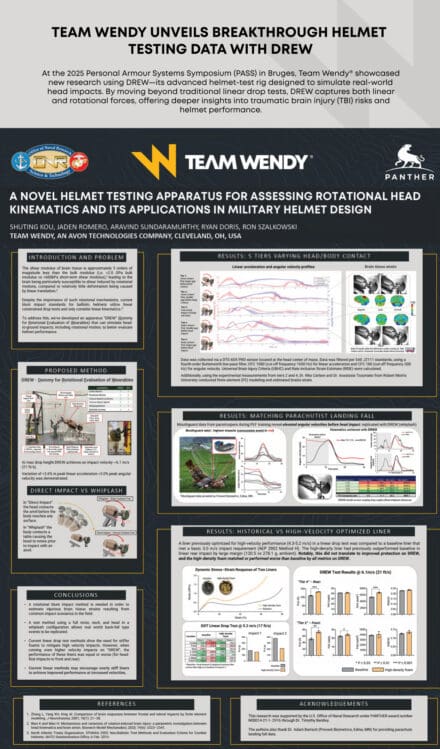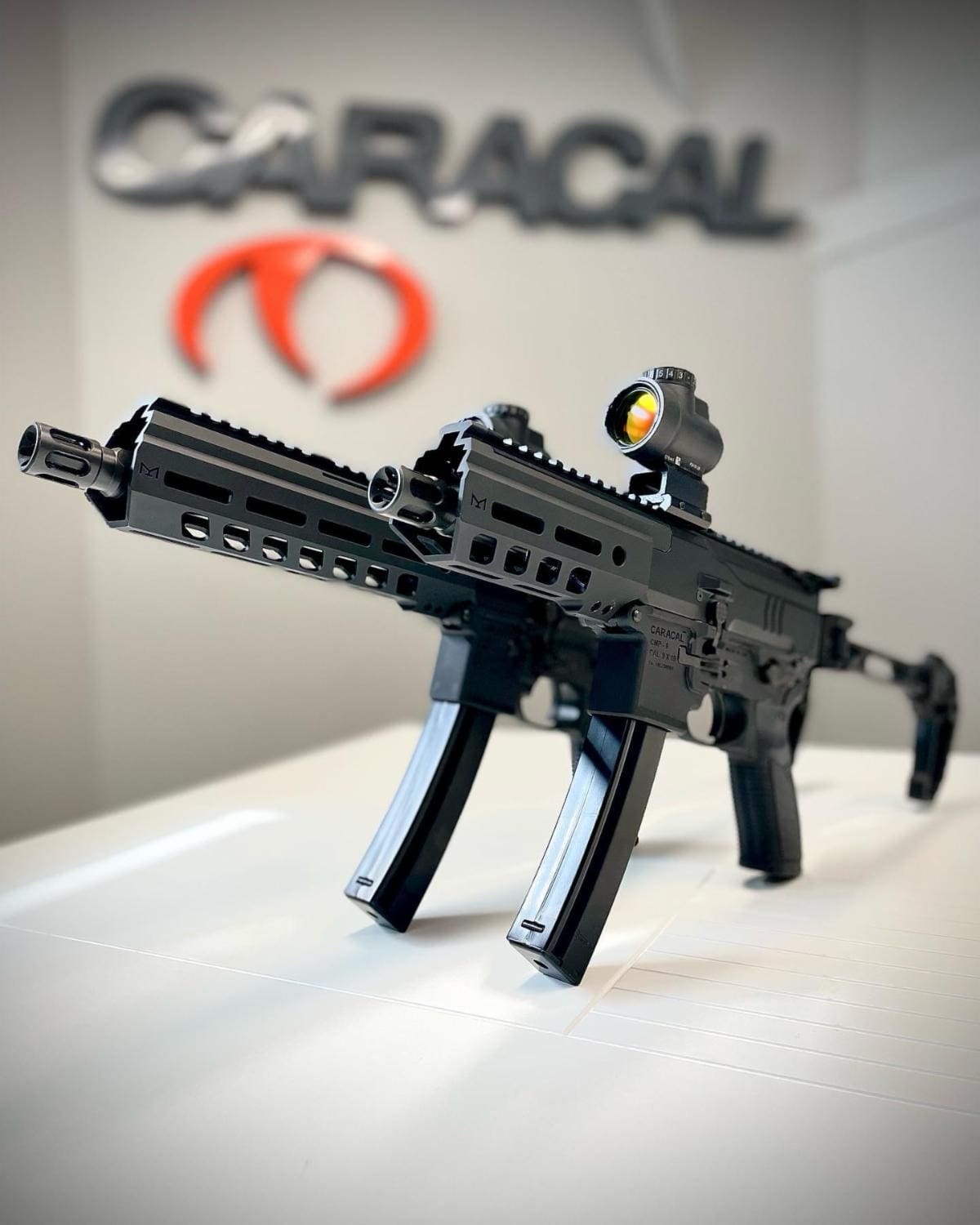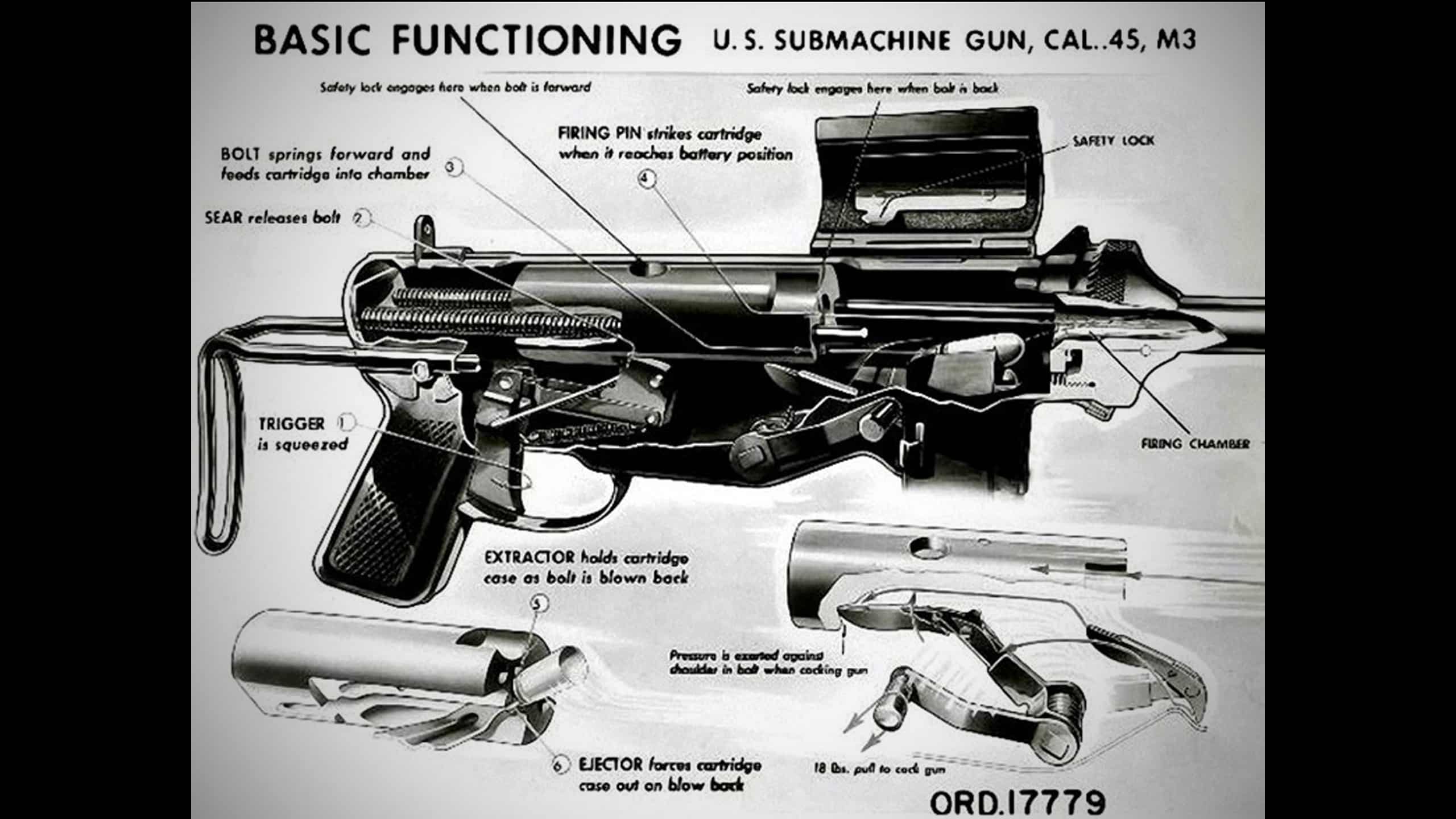CLEVELAND, Ohio – Oct. 29, 2025 – Team Wendy®, a leading provider of innovative head protection systems, presented at the recent Personal Armour Systems Symposium (PASS) held in Bruges, Belgium, where company researchers shared new findings on DREW (Dummy for Rotational Evaluation of Wearables), including a paper published in the proceedings. Aiming to advance helmet testing from traditional linear drops to encompass rotational events, Team Wendy is on a mission to change the way the industry measures head impacts.

Who’s DREW?
Developed by Team Wendy, DREW is a biofidelic (behaves like the human body) helmet-test rig built to simulate real head-to-ground falls and capture both linear and rotational head motion (something legacy linear-drop tests miss). It uses a 50th-percentile Hybrid-III head, neck and torso on a pivoting assembly to recreate front, rear and side impacts, as well as to study both head-direct and whiplash-induced events.

“We want to measure how the brain responds to complex impacts, in ways that we still don’t understand well enough, so we can inform better products and standards going forward,” said Ron Szalkowski, head of R&D at Team Wendy and co-author of the PASS paper. “DREW helps move that conversation beyond linear drops to the rotational forces associated with concussion and other forms of traumatic brain injury (TBI).”
What Team Wendy Discovered
The PASS paper compared Team Wendy’s standard EXFIL® Ballistic helmet liner to a high-density foam ballistic liner tuned for DOT/monorail drops (where the helmeted head form is guided straight down onto an anvil at relatively high impact speeds). Using DREW in a rear, whiplash-induced configuration, as well as a front, direct impact configuration, the foam ballistic liner produced higher head loads (peak linear and angular acceleration) with no meaningful gain reduction in peak angular velocity.
“The foam liner was associated with more jolting to the head, both straight-on and in a twisting motion,” Szalkowski said. “Think of it like tuning a car’s performance on a treadmill, only to learn that it struggles with bumps and turns in the road. The danger is that a helmet design can look good on paper, but increased rigidity, for instance, does not necessarily help you in a real fall.”
The PASS poster also showed how DREW can mimic a real parachute landing. Researchers used sensor data from mouthguards worn by paratroopers to study the rotational dynamics linked to concussion-inducing, head-to-ground impacts. Then they tuned the rig (adjusting the drop angle and whiplash distance) until DREW matched the data within 4%.
“This gives our engineers a realistic target to design helmets against, and it could go so far as to inform future revisions to test procedures and performance criteria,” Szalkowski added.
Headstrong for Safety
Team Wendy’s initiatives at PASS showcase a profound commitment to comprehensive, peer-reviewed research that raises the benchmarks for head protection. Based on these insights, the company is advancing with DREW evaluations across different helmet categories and is supplying data to aid standards development efforts in partnership with academic and governmental entities. To request the PASS paper and poster, please reach out to Sara Jonas, global director of marketing, [email protected]. The paper is also available via PASS proceedings.
This material is founded on research funded by the U.S. Office of Naval Research through PANTHER award number N00014-21-1-2916. Team Wendy expresses gratitude to the partners at Robert Morris University for their contributions to FEA modeling and for the RISE3D injury metric utilized in DREW studies.
You can skip to the end and leave a response. Pinging is currently not allowed.
Read the full article here








Leave a Reply